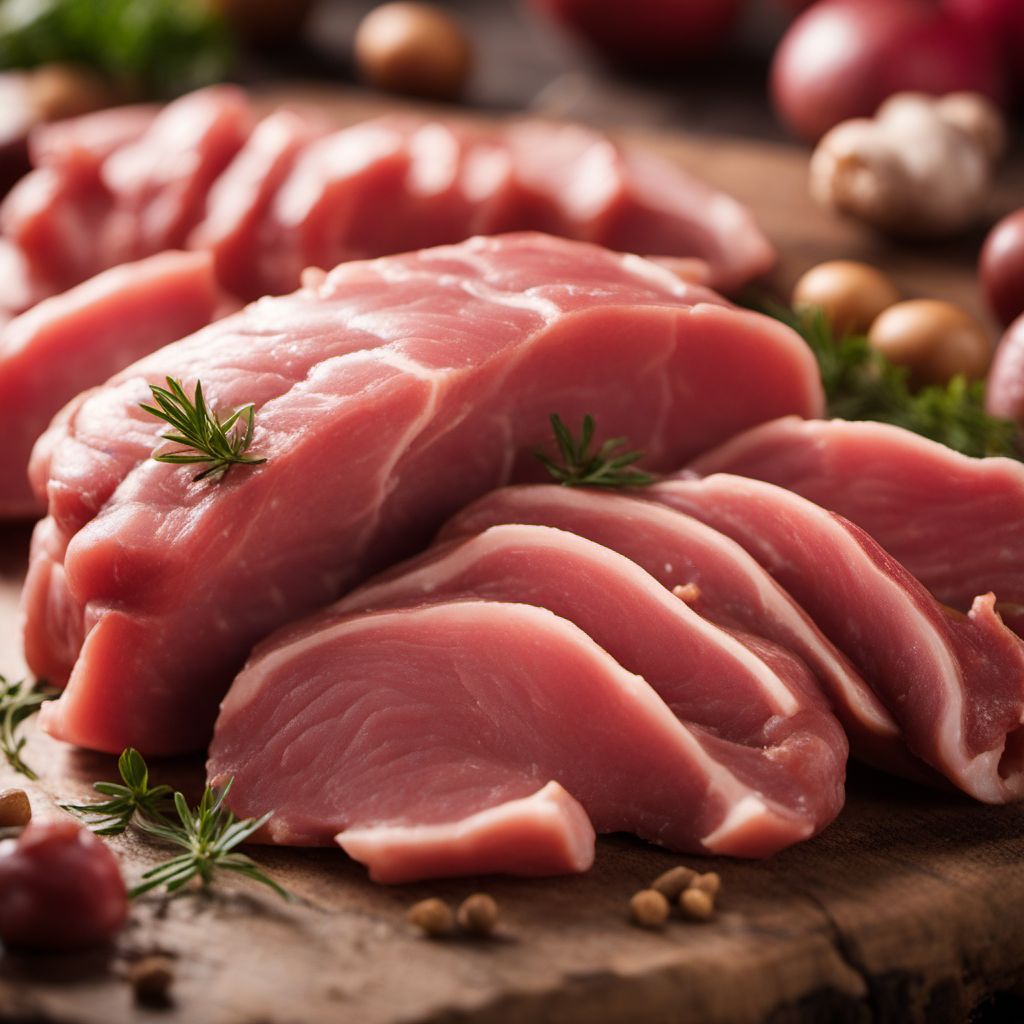
Ingredient
Pig fresh meat
The Versatile Protein: Pig Fresh Meat
Pig fresh meat comes from domestic pigs and is available in different cuts, such as chops, ribs, tenderloin, and ground pork. It has a rich, savory flavor and a tender, juicy texture when cooked properly. Pig fresh meat can be prepared using various cooking methods, including grilling, roasting, frying, and braising, allowing for a wide range of culinary possibilities.
Origins and history
Pig domestication dates back thousands of years, with evidence of pig farming found in ancient civilizations such as Mesopotamia, China, and Egypt. Throughout history, pig meat has been a valuable source of protein and sustenance for many cultures. It has played a significant role in traditional dishes and cultural celebrations around the world.
Nutritional information
Pig fresh meat is a good source of high-quality protein, essential vitamins, and minerals. It is particularly rich in B vitamins, iron, and zinc. However, it is important to consume pig fresh meat in moderation as part of a balanced diet, as it can be high in saturated fat.
Allergens
Pig fresh meat may cause allergic reactions in individuals with pork allergies. It is important to be cautious and avoid consumption if allergic symptoms occur.
How to select
When selecting pig fresh meat, look for cuts that are firm, moist, and pinkish-red in color. Avoid meat that appears pale, dry, or discolored. The fat should be white or creamy in color, with a firm texture. Choose cuts with a good marbling of fat, as this enhances the flavor and tenderness of the meat. Additionally, ensure that the meat is sourced from reputable suppliers or farms that follow proper hygiene and animal welfare practices.
Storage recommendations
To maintain the freshness and quality of pig fresh meat, store it in the refrigerator at a temperature below 40°F (4°C). Keep the meat wrapped tightly in plastic wrap or sealed in airtight containers to prevent exposure to air and moisture. Use the meat within a few days of purchase or freeze it for longer storage. Thaw frozen pig fresh meat in the refrigerator before cooking.
How to produce
Raising pigs for fresh meat production requires specialized knowledge and facilities. It is recommended to consult with experienced pig farmers or agricultural experts who can guide the process of pig rearing, including breeding, feeding, and housing. Proper sanitation and disease prevention measures are crucial to ensure the health and quality of the pigs.
Preparation tips
Pig fresh meat can be prepared using various cooking techniques and incorporated into a wide range of dishes. It can be grilled to perfection, roasted with aromatic herbs and spices, fried for crispy delights, or braised for tender and flavorful stews. It pairs well with both sweet and savory flavors, making it a versatile ingredient in cuisines around the world.
Substitutions
Beef, chicken, or turkey can be used as substitutes for pig fresh meat in recipes that call for pork. However, keep in mind that the flavor and texture may differ from the original dish.
Culinary uses
Pig fresh meat is widely used in various cuisines around the world. It is a staple in dishes such as pork chops, roast pork, pork stir-fry, pork sausages, and pork barbecue. It is also a key ingredient in traditional dishes like bacon, ham, and pork belly. The versatility of pig fresh meat allows it to be incorporated into a wide range of cuisines, from Asian stir-fries to European roasts.
Availability
Pig fresh meat is commonly available and consumed in many countries worldwide, including China, the United States, Germany, Spain, and Vietnam. It is a popular protein choice in various culinary traditions and can be found in supermarkets, butcher shops, and specialty meat markets.
